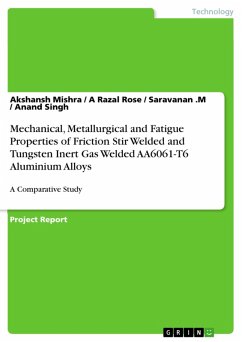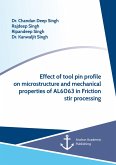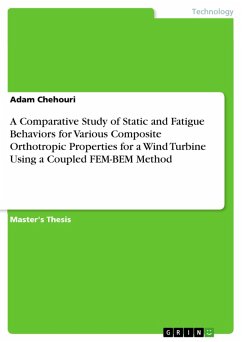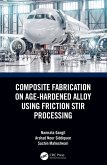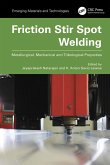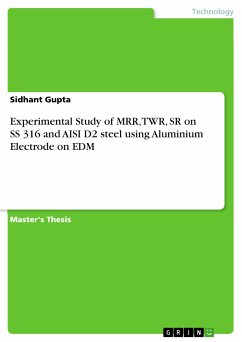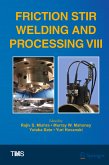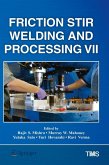Project Report from the year 2017 in the subject Engineering - Mechanical Engineering, grade: 8.9, SRM University, language: English, abstract: This paper deals with the mechanical, microstructural and fatigue analysis of welded joints. In the study, 6061-T6 aluminium alloy plates in 4mm thickness, that are particularly used for aerospace and in automotive industries, were welded using Tungsten Inert Gas (TIG) welding and Friction Stir Welding (FSW) methods as similar joints with one side pass and parameters of varying tool rotation, weld speed and 2.3 degree tool tilt angle. The weld zones cross sections were analysed with light optical microscopy (LOM). During recent years several investigations have been made of fatigue properties of friction stir welded joints. The great majority of available data from the fatigue analysis of friction stir welded joints are concerned with uniaxial loading conditions for a simple geometry. In uniaxial loading nominal stress is normally used as reference stress and it is easy to determine. However, fatigue failure is a highly localized phenomenon in engineering components and determining the nominal stress is not always possible due to the complexity of structures and presence of stress concentrators such as notches and cracks in which many approaches based on local parameters.
Dieser Download kann aus rechtlichen Gründen nur mit Rechnungsadresse in A, B, BG, CY, CZ, D, DK, EW, E, FIN, F, GR, HR, H, IRL, I, LT, L, LR, M, NL, PL, P, R, S, SLO, SK ausgeliefert werden.

